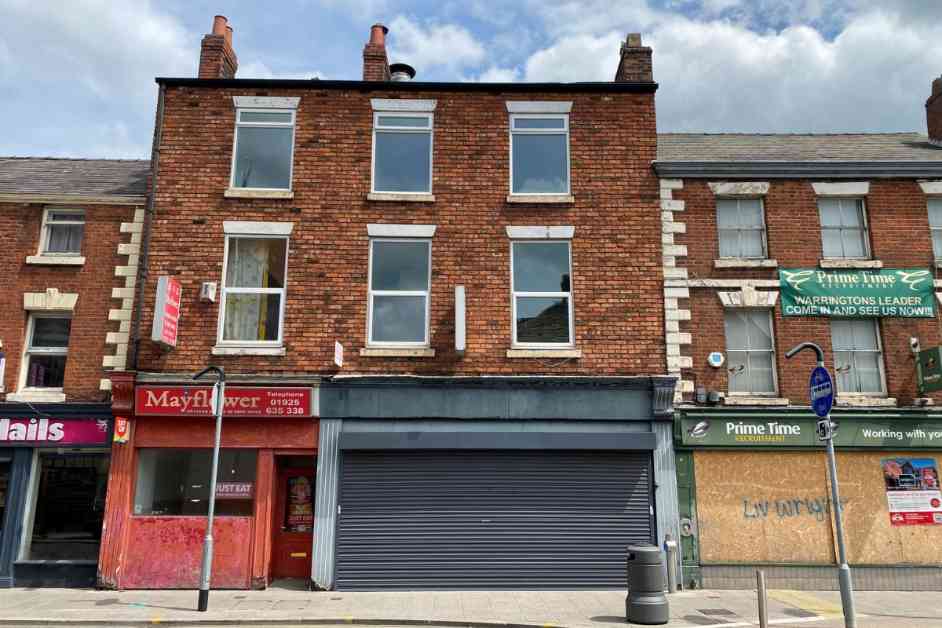Historic Town Centre Buildings Revitalization Plan Faces Council Rejection
A proposal to convert a row of dilapidated buildings on Bridge Street in a historic town centre into a house of multiple occupation (HMO) has been met with rejection by the Warrington Borough Council. The buildings at 127, 129, and 131 Bridge Street were originally intended to be transformed into a 10-bed HMO by Property Touch Ltd. However, after downsizing the plan to an eight-bed HMO, the council planners ultimately refused to grant planning permission for the project.
The three-story buildings in question, which were previously used as hot food takeaway premises with living and storage space above, are believed to date back to the Victorian era. Described as being in poor condition and having a negative impact on the surrounding area, the applicant aimed to create a communal living space on the ground floor, complete with a large open-plan kitchen, living, and dining area, as well as utility-laundry facilities. The proposal also included ensuite bathrooms in each bedroom to cater to private residents seeking affordable housing solutions in the Warrington area.
Community Concerns and Council Decision
Despite the potential benefits highlighted by the applicant, such as addressing housing demand, providing quality accommodation, and supporting local businesses, the council raised several issues with the proposed development. Concerns were raised regarding the standard of residential amenity, lack of defensible space, and potential harm to heritage assets within the conservation area. The council ultimately found that the proposed alterations would detract from the significance of the designated heritage assets and negatively impact the visual amenity of the street scene in the town centre.
The decision to reject the revitalization plan comes in the wake of recent approvals for neighboring Bridge Street buildings to be refurbished for mixed-use commercial and residential purposes. While retaining commercial space on the ground floor, provisions have been made for a four-bed flat across the first and second floors of these buildings, showcasing a different approach to revitalizing the area.
Implications for Housing and Urban Development
The rejection of the HMO conversion plan raises questions about the balance between preserving historical assets and meeting contemporary housing needs in urban areas. The struggle to repurpose vacant or underutilized buildings while respecting the heritage and character of a town center is a common challenge faced by local authorities and developers alike.
In the case of Bridge Street, the council’s decision highlights the importance of striking a balance between conservation and regeneration efforts. While there is a push to provide affordable housing and revitalize vacant properties, it is crucial to ensure that any development aligns with the heritage and urban fabric of the area. Finding creative solutions that preserve the historic charm of the town center while meeting the demands of modern living is essential for sustainable urban development.
Future Prospects for Bridge Street Revitalization
As the debate over the future of Bridge Street continues, stakeholders will need to explore alternative strategies for revitalizing the area. Balancing the preservation of heritage assets with the need for affordable housing and commercial opportunities will require innovative approaches and collaborative efforts between the council, developers, and the local community.
While the rejection of the HMO conversion plan may be seen as a setback, it also presents an opportunity to reassess the revitalization strategy for Bridge Street. By engaging in meaningful dialogue and exploring diverse options for repurposing the buildings, there is potential to create a vibrant and sustainable urban environment that celebrates both the past and the present.
In conclusion, the rejection of the revitalization plan for the historic town center buildings on Bridge Street underscores the complexities of urban development and heritage preservation. Moving forward, a holistic approach that considers the unique character of the area, the needs of the community, and the goals of sustainable urban planning will be essential in shaping the future of Bridge Street and similar historic town centers.




















